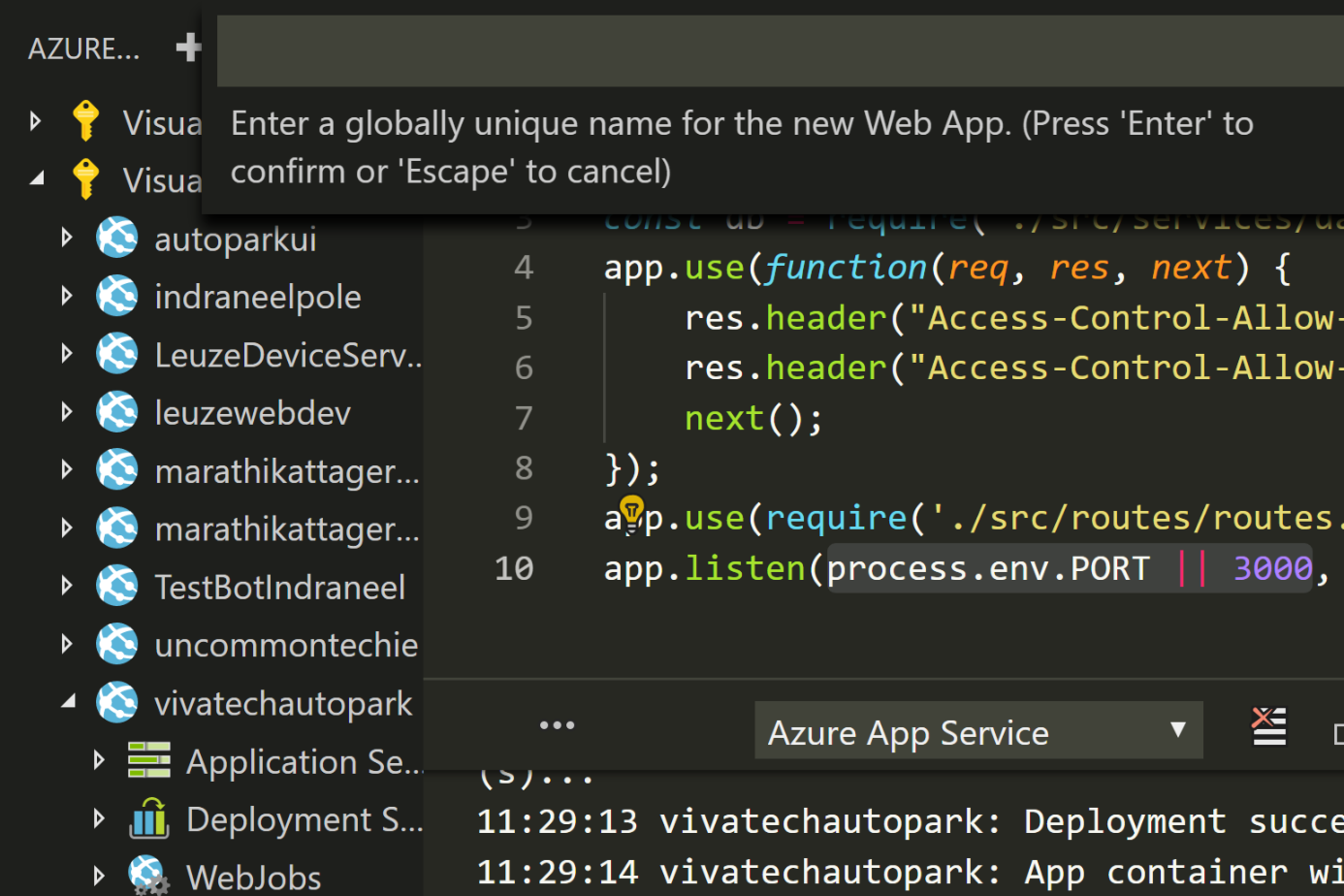
- Visual studio code install node.js generator#
- Visual studio code install node.js update#
- Visual studio code install node.js download#
Create a new H1 header with "Hello, world!" and replace the tag in ReactDOM.render with element.

Visual studio code install node.js update#
Let's update the sample application to "Hello World!". A Peek window will open showing the App definition from App.js. Put the cursor over the App, right click and select Peek Definition. Through the TypeScript language service, VS Code can also provide type definition information in the editor through Go to Definition ( F12) or Peek Definition ( ⌥F12 (Windows Alt+F12, Linux Ctrl+Shift+F10)). If you select a method, you'll also get parameter help: ATA pulls down the npm Type Declaration files ( *.d.ts) for the npm modules referenced in the package.json. VS Code uses the TypeScript language service for its JavaScript code intelligence and it has a feature called Automatic Type Acquisition (ATA).

, you see the types and methods on the object through IntelliSense. You'll notice that VS Code has syntax highlighting for the various source code elements and, if you put the cursor on a parenthesis, the matching bracket is also selected.Īs you start typing in index.js, you'll see smart suggestions or completions.Īfter you select a suggestion and type. Now expand the src folder and select the index.js file. You'll get nice formatting, hyperlink navigation to headers, and syntax highlighting in code blocks. You can open the preview in either the current editor group ( Markdown: Open Preview ⇧⌘V (Windows, Linux Ctrl+Shift+V)) or in a new editor group to the side ( Markdown: Open Preview to the Side ⌘K V (Windows, Linux Ctrl+K V)). A nice way to review the README is by using the VS Code Markdown Preview. This has lots of great information about the application and React in general. In the File Explorer, one file you'll see is the application README.md Markdown file. To open your React application in VS Code, open another terminal or command prompt window, navigate to the my-app folder and type code. We'll leave the web server running while we look at the application with VS Code. You should see the React logo and a link to "Learn React" on in your browser. Let's quickly run our React application by navigating to the new folder and typing npm start to start the web server and open the application in a browser: cd my-app npm start Note: If you've previously installed create-react-app globally via npm install -g create-react-app, we recommend you uninstall the package using npm uninstall -g create-react-app to ensure that npx always uses the latest version. This may take a few minutes to create the React application and install its dependencies. Where my-app is the name of the folder for your application. You can now create a new React application by typing: npx create-react-app my-app Tip: To test that you have Node.js and npm correctly installed on your machine, you can type node -version and npm -version in a terminal or command prompt.
Visual studio code install node.js download#
npm is included with Node.js which you can download and install from Node.js downloads.
Visual studio code install node.js generator#
To use the generator as well as run the React application server, you'll need Node.js JavaScript runtime and npm (Node.js package manager) installed. We'll be using the create-react-app generator for this tutorial. The Visual Studio Code editor supports React.js IntelliSense and code navigation out of the box.

React is a popular JavaScript library developed by Facebook for building user interfaces.


 0 kommentar(er)
0 kommentar(er)
